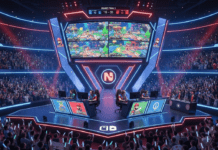AMD has just confirmed that these latest generation cards support Ray tracing if the game uses APIs in common platforms such as Microsoft DXR and Vulkan and not proprietary extensions. Thus, Ray tracing can be activated with AMD cards for example for the title Control and not for Quake II RTX or Wolfenstein Youngblood whose extensions were created by Nvidia.
AMD did not provide benchmarking data on Ray tracing and super sampling (or Super Resolution) when it announced the release of these Radeon Rx 6000 series cards on October 28. It produced benchmarking results with Ray Tracing disabled. This left connoisseurs in doubt and suggested that the new generation AMD cards would not be able to beat the Nvidia GForce 3000 series with Ray Tracing activated.
Some information provided by AMD
AMD has not yet presented to the press the details regarding the management of Ray tracing and super sampling . AMD will surely do so within a few days because the first Radeon RX 6000 series generation cards will be released on November 18. But in the meantime, AMD said in AdoredTV that these cards will support Ray Tracing for all games with industry-standard APIs such as Microsoft DXR and Vulkan API. However, its cards will not be compatible with Nvidia's proprietary extensions.

It is obvious that Nvidia used its own extensions because it was a pioneer in this field. She was the first to launch Ray Tracing even before the gaming industry followed its path. The word is therefore being spread to the gaming industry to now use standardized common extensions. Other graphics card manufacturers like Intel could also produce cards that support Ray tracing, among other things, and it is clear that it will be this industry standard that will be used by all of them. As for super sampling, the equivalent of DLSS for Nvidia, it seems that AMD is working on that. It probably won't be available when the Radeon RX 6000 series cards launch, but Microsoft's DirectML will be used. This “open” API is multi-platform and can be used by all graphics card manufacturers, unlike DLSS which can only be used by Nvidia cards.
Benchmarking comparison of new generation AMD and Nvidia cards

The Radeon RX 6000 series have computing units, each of which is equipped with an accelerator. These accelerators called RA (Ray Accelerator) are used when Ray Tracing is activated. Since the Radeon RX 6900 XT card has 80 Compute Units, it therefore has 80 Ray Accelerators. The Radeon RX 6800XT has 72 RA and the RX 6800 has 60. The manufacturer announced an acceleration of 13.8 with a frame rate of 471 FPS for the Radeon RX 6800XT .
Enthusiasts therefore began testing Nvidia RTX 3000 series cards with the DXR API. The results are clear: Nvidia's GeForce cards remain masters of Ray tracing. Indeed, the GeForce RTX 3080 records a frame rate of 630 FPS and the GeForce RTX 3090 is at 749 FPS . This test result means that the GeForce RTX 3080 card is 33% more efficient than the Radeon RX 6800 XT and the GeForce RTX 3090 card is 60% faster than its AMD rival.
We are impatiently awaiting the details that will be provided by AMD for these next generation cards, but these tests confirm Nvidia's superiority in Ray tracing.




